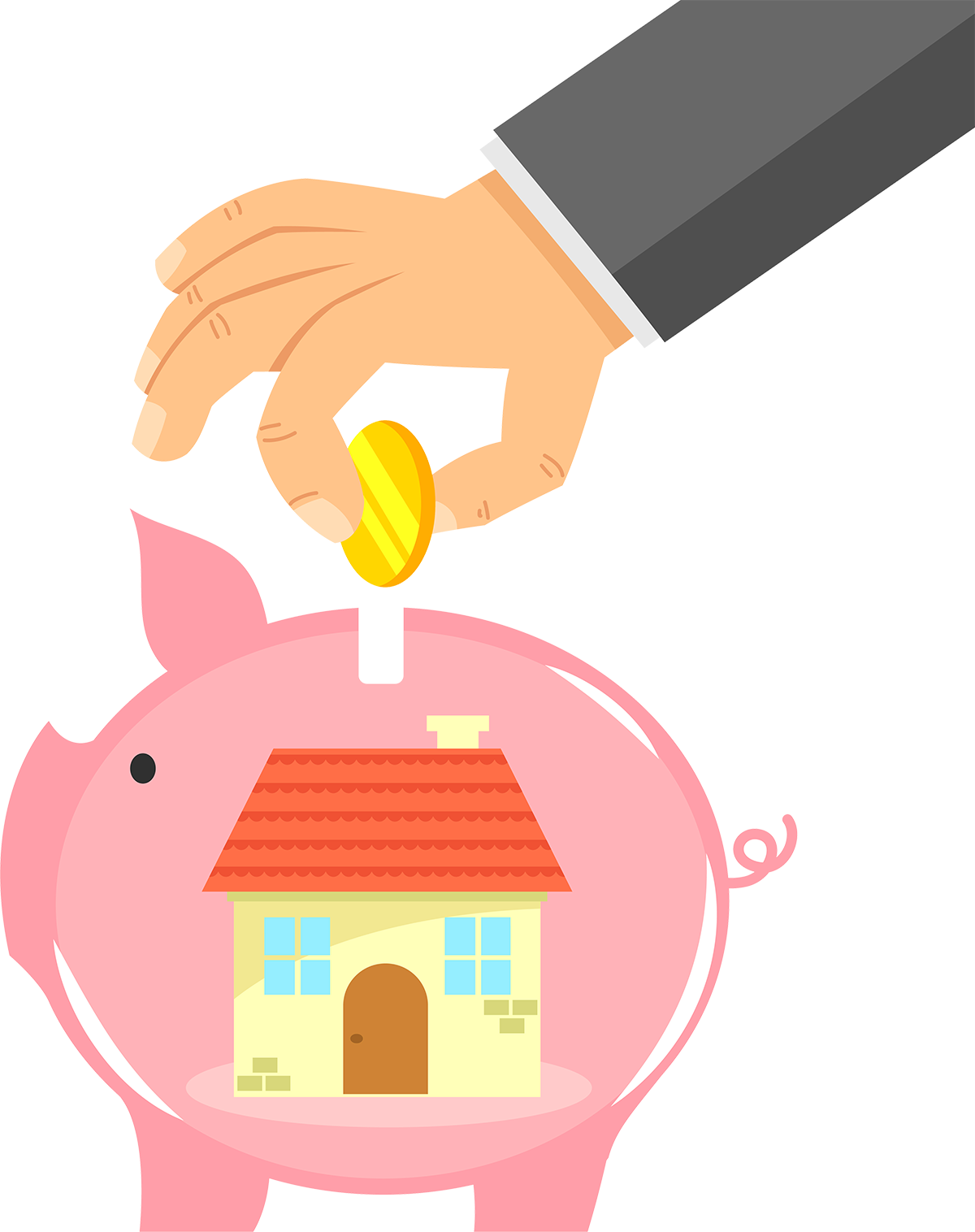
Calculating Accelerated Biweekly Mortgage Payments
Our site offers 3 different calculators for people considering switching to biweekly loan payments. If you intend to start biweekly payments from the beginning of the loan & do not plan to incorporate any other extra payments, please click here to use the related calculator. Below there are 2 more calculators. The first is a basic one with biweekly payments while the second one allows additional extra payments to be added to the biweekly payments.
- Basic - for owners who switch to biweekly payments somewhere in the middle of their loan term, but do not plan to add any other additional payments.
- Advanced - for owners who switch in the middle of the loan term AND want to compliment their biweekly payments with other extra payments. This calculator also allows you to generate amortization schedules for the original loan, a loan with extra monthly payments, a loan with biweekly payments, and a loan with biweekly payments combined with extra payments. After calculating these payments, you can then create printable amortization schedules for each loan type.
Current New York mortgage rates are published to help you see how much you might save by refinancing at today's low rates.
*Based upon a 10% yield on investing money saved over the life of the loan, which is similar to the rate of return on the S&P 500 in recent decades.
Current New York 30-YR Fixed Mortgage Rates
The following table highlights current New York mortgage rates. By default 30-year purchase loans are displayed. Clicking on the refinance button switches loans to refinance. Other loan adjustment options including price, down payment, home location, credit score, term & ARM options are available for selection in the filters area at the top of the table.
Save on Your Mortgage Through Bi-Weekly Payments
As a financing option, fixed-interest amortization has several advantages for the aspiring homeowner. Payments remain the same through the life of the mortgage. Thus, it is easy for you to plan around them when making a budget. Fixed payments also make home ownership more cost-effective in the long term. In time, fixed mortgage payments become cheaper than ever-rising rents.
Thus, the 30-year fixed-rate mortgage has become a standard throughout the United States. They offer some of the lowest fixed monthly payments in the home loan market. This makes them seem quite affordable to the average home buyer. But looks can be deceiving. The lower monthly payments belie larger total interest costs. You end up paying more for your home than you would have if you paid a higher monthly payment.
But even if you can only afford a 30-year mortgage, there are ways for you to cut down on your expenses. Consistent affordable extra payments help you shave several years off your mortgage. And one of the best ways to increase your mortgage payments is through bi-weekly payments.
The Essentials of Bi-Weekly Payments

A bi-weekly payment schedule means that your bills are due every two weeks. This should not be mistaken for a semi-monthly schedule, where your bill would be twice a month. The advantage of this system becomes clear when you examine the Gregorian calendar.
The number of months and weeks in a year do not line up. Each year (a period of approximately 365.25 days) has 12 months and about 52 weeks. Because 52 is not divisible by 12, some months will have 4 weeks, while others have five. Meanwhile, the number of weeks is divisible by 13. This will yield 26 bi-weekly periods in a year, as opposed to 24 semi-monthly ones.
By switching to a bi-weekly payment schedule, you have in effect added a month’s worth of payments each year. This reduces your principal balance and helps you save on your mortgage.
Running the Numbers on Your Loan Amortization
Mortgages, like all loans, are variations of the same calculation. You must pay your lender a fee, interest, on top of the sum you borrowed. Your interest is the product of the following factors:
- Principal: The amount you borrowed
- Rate: A percentage charged by your lender for the use of their money
- Term: The number of years it takes to pay off the debt
The greater any of these factors are, the more interest you must pay. Choosing a shorter term or a lower rate can reduce your interest costs. This is especially important when you are borrowing large sums of money. But this isn’t always the road taken by prospective homeowners. To reduce their monthly payments, they sometimes choose longer terms.
Mortgages are examples of an amortized loan. These spread out payments over a pre-defined term. The term comes in increments of 15, 20, or 30 years. The formula for amortization is as follows:
A = P [ i(1 + i)ⁿ ] / [ (1 + i)ⁿ – 1]
Where:
A = Monthly principal and interest (P + I) payment
P = Principal
i = Monthly interest rate
n = Term (in months)
You derive your monthly interest rate by dividing your annual percentage rate (APR) by 12. With a fixed-rate mortgage, you receive a monthly payment that remains static for the life of the loan. How much of your monthly payment goes toward interest, meanwhile, changes each month. It is calculated as follows:
I = Bi
Where:
I = Monthly interest payment
B = Principal balance
i = Monthly interest rate
Each month, you first subtract the monthly interest payment from your monthly payment. The difference pays down the principal. Afterward, the monthly interest payment is recalculated based on the new interest balance. The process continues each month until the balance is cleared.
Let’s see this in action. Note that our example is rounded and will differ slightly from the results of the calculator above.
30-year fixed-rate mortgage (360 months)
Loan Amount: $260,000
Interest rate: 3.5% APR (0.29% percent per month)
A = $260,000 x [(0.0029) x (1 + 0.0029) ^ 360] / [(1 + 0.0029) ^ 360 – 1]
A = $260,000 x [0.0029 x (1.0029) ^ 360] / [(1.0029) ^ 360 – 1]
A = $260,000 x [0.0029 x 2.8363] / [2.8363 – 1]
A = $260,000 x [0.0082] / [1.8363]
A = $260,000 x 0.0045
A = $1,170

Escrow Payments
In practice, your actual monthly mortgage payment will be much higher. It consists of both your monthly P + I payment and various escrow payments. These usually include property taxes, homeowner’s insurance, and homeowner’s association dues. Your lender folds these into your monthly payment for your convenience.
Now, let’s look at how much you must pay on the first month:
I = $260,000 x 0.0029
I = $754
B = $260,000 – ($1,170 – $754)
B = $260,000 – $416
B = $259,584
In the first few years, much of your mortgage payment goes toward interest payments. But with every payment, your principal balance decreases. This means your interest payments get smaller. Over time, your principal payments overtake your interest charges.

Amortization Schedules
Your monthly mortgage payments are often charted in an amortization schedule. Each payment corresponds to a specific month in the calendar. Printing out an amortization schedule can help you keep track of where your payments are. It will also help you identify the dates of potential payment milestones.
This front-loading comes with challenges for homeowners with long-term mortgages. It can take a while for you to build equity on your home. This is important if you ever need to leverage your home as a line of credit. If you paid less than a 20 percent down payment, you will be saddled with this extraneous expense for a long time.
Pros and Cons of Biweekly Payments

The Advantages of Extra Payments
Many people are paid biweekly. Those who align their mortgage payments with the date of their paycheck won't have to worry about making sure they save enough out of their paycheck to cover their home loan payments.
Most home loans across the United States incorporate a 30-year loan term. Most of the early payments on longer duration loan go toward paying interest.
Each year has 52 weeks in it, which is 26 bi-weekly periods. People making 26 payments which are half of their regular monthly payment are effectively making a 13th monthly payment which is applied entirely to the principal of the loan. This single extra payment per year builds home equity faster and can end up saving around 5 or 6 years on the life of the loan compared to a normal 30-year amortizing loan.
Any early repayment in the loan which goes toward principal extinguishes debt that will not accumulate any interest for the remainder of the loan period.

Accelerated repayment counts on lowering the value of your principal. With each extra payment, the amount you need to pay in interest shrinks. This creates a cascading effect on every other interest payment. Because your interest payment is smaller, more of your next monthly payment goes to your principal. In time, extra payments can help you save on several thousand dollars’ worth of interest payments. It also helps shorten the term of your mortgage, hence the alternate term “accelerated repayment.”
The key to making these savings possible is consistency. Windfall payments must be big to leave a significant impact on your mortgage. In contrast, regular extra payments add up over time. Thus, they leave a greater impact on your interest costs. These small but regular payments can help whittle down your mortgage without breaking the bank.
Let’s look at another example to see this in action. Suppose you had this mortgage:
30-year Fixed-Rate Mortgage
Loan Amount: $280,000
Interest rate: 3.5% APR
Current Monthly Payment: $1,800
Current P + I Payment: $1,257.33
You decide to switch to a bi-weekly payment schedule exactly three years since your mortgage was consummated. Moreover, you can afford to add an extra payment of $100 at each pay period. Using the calculator above, let’s see how your original terms compare with the new schedule, extra payments, or both.
Current Balance: $263,299.16
Interest Already Paid: $28,562.87
| Results | Current | Current Plus Extra | Bi-Weekly | Bi-Weekly Plus Extra |
|---|---|---|---|---|
| Mortgage payment without escrow | $1,257.33 | $1,357.33 | $628.66 | $678.66 |
| Mortgage payment with escrow | $1,800.00 | $1,900.00 | $900.00 | $950.00 |
| Years to pay off | 27.0 | 23.9 | 23.7 | 21.2 |
| Interest savings | None | $18,587.94 | $19,656.45 | $34,708.84 |
| Monthly payments eliminated | None | 37.0 | 39.2 | 70.2 |
| Total payment savings | None | $46,521.03 | $49,325.83 | $88,206.19 |
| Equity after 5 years | $48,737.94 | $55,284.55 | $55,630.53 | $62,728.76 |
| Equity after 10 years | $86,892.29 | $101,235.54 | $101,999.93 | $117,552.89 |
| Balance due after 21.2 Years | $79,505.14 | $41,947.81 | $40,097.45 | Paid Off |
You’ll also save a bit more money by accelerating your mortgage payments. What if you invested that money? Here’s how much you could get in the time it takes to pay off your original mortgage. The calculator assumes a 10 percent annual percentage yield:
| Results | Current | Current plus Extra | Bi-Weekly | Bi-Weekly plus Extra |
|---|---|---|---|---|
| Average monthly savings: | None | $64.77 | $69.03 | $136.73 |
| Average annual savings: | None | $777.20 | $828.31 | $1,640.78 |
| Equivalent interest rate: | 3.50% | 2.79% | 2.77% | 2.46% |
| Cash available after 27 years: | None | $51,442.25 | $51,853.44 | $97,484.28 |
All in all, you get the most savings by paying extra on top of your bi-weekly payments. Think of how much more you can save if you add an extra $50 to that? Or another hundred? The bigger the extra payment you can add, the more you can save.
Prepayment Penalties

Most lenders make their profits from the first few years of the mortgage. Thus, some lenders add prepayment penalties to discourage extra payments or refinancing. Before signing on to any mortgage, read the fine print. Ask if the penalties can be waived. If your lender refuses, take your business elsewhere.
If you couldn’t remove your penalties, you may have the option to wait them out. By law, prepayment penalties only last for three years. These apply to mortgages consummated from January 2014 onwards.
Disadvantages of Extra Payments
Some companies charge a fee for managing biweekly payments. These fees often exceed the interest savings from employing the strategy, and when they do they ultimately do not save homebuyers any money. Instead they become an unneeded expense.
While paying more on a home means the home will be owned sooner, it also means the remainder of the consumer's budget will be a bit tighter as they are spending more paying off their loan faster.
If the homeowner defaults & goes into foreclosure before the loan term is up then the bank will own the property & any extra payments won't have benefited the foreclosed home buyer.
Bi-Weekly Payments vs. Refinancing
Only refinancing offers better results. If the rates are low enough, refinancing yields higher interest savings. But a shorter term leads to a higher monthly payment, which most people cannot afford. Let’s see how our first example will turn out if you instead refinanced. We’ll assume your closing costs amount to $1,500.
| Mortgage | Original | Bi-Weekly + Extra Payments | Refinanced |
|---|---|---|---|
| Monthly Payment Without Escrow | $1,257.33 | $678.66 | $1,694.35 |
| Years to Pay Off | 27 | 21.2 | 15 |
| Total Payment Savings | None | $88,206.19 | $100,889.80 |
Although you’ve saved the most amount of money, your monthly payments skyrocket. Not all homeowners can afford that big jump in monthly payments. Nor can they easily afford the up-front costs of refinancing. While extra payments don’t have as great of an impact, they are easier on the pocket.
Refinancing’s benefits are dependent on market forces. You can only save through refinancing if you qualify for a sufficiently lower rate. Thus, it is not a good option when the rates are rising. Meanwhile, extra payments can be done at any time you can afford. In the time it takes for you to wait for favorable interest rates, you could’ve started saving through extra payments.
Weighing in on Bi-Weekly Payments

Bi-weekly payments offer a happy midpoint between refinancing and extra payments. The extra month it adds is much higher than most extra contributions. And because these are distributed, you don’t feel their impact on your monthly budget.
The bi-weekly payment schedule also maps closer to how people are paid. Most people receive their wages and salaries twice a month. This ensures that you can send your mortgage payments as soon as you get paid. For much of the year, it becomes impossible to pay late.
There are disadvantages to a bi-weekly payment schedule. To begin with, this schedule does not align precisely with semi-monthly pay cycles. There will be months that you must pay three times. The shorter schedules also mean that late payments, when they do happen, can add up fast. There is a smaller margin of error.
Finally, setting up a bi-weekly payment schedule usually involves extra expenses. While these may be smaller than the up-front costs of refinancing, they add up over time.
Repayment Options
There are three main ways to set up a bi-weekly payment scheme. The first two involve making changes to your actual amortization schedule. This has the advantage of dividing your actual monthly payments into two-week chunks. One option is to ask your lender to set one up for you. Some lenders allow you to change your payment structure altogether. This comes with extra costs. Besides a set-up fee, you may also need to pay maintenance costs.
Not all lenders will agree to these changes. Thus, third-party services offer to set up a bi-weekly schedule on your behalf. But seek these services out with caution. Their setup and maintenance costs can be pricey. Canceling the contract may also come with steep costs. Moreover, many of these services may not work as advertised. Some may merely be paying your regular mortgage on your behalf.

Planning Ahead
It pays to anticipate the third payment when switching to a bi-weekly schedule. Set aside at least two bi-weekly payments’ worth of cash.
To avoid these costly fees, you might opt instead to do it all yourself. This is the cheapest available option and is the easiest to track. All you need to do is make a monthly mortgage payment’s worth of extra principal payments.Each pay day, set aside a sum equal to a 1/12th of your mortgage payment. You may add this to your mortgage payments, but you can also set this money aside. At the end of the year, you can pay this amount toward your principal as a lump sum. This is the cheapest of the options. You needn’t pay opening or maintenance fees to do this. You also remove the need to keep track of your payments.
In Summary
Extra mortgage payments are one of the safest places to put your money. Unlike investing, there are very few risks involved in making accelerated mortgage payments. Each extra payment you make guarantees a reduction of your interest costs. In uncertain climes, building equity on your home may be the best use of your money.
Before you jump in, examine your financial status. You might need your extra money on other more important things.These include emergency funds and high-interest debts. Secure your everyday finances before embarking on extra mortgage payments.
Talk to your lender about your intentions to make extra or bi-weekly payments. This will help avoid costly misunderstandings such as accidental late fees. It also ensures that they send your extra payments to your principal balance.
Check your budget before committing to any accelerated payment strategy. You might find that you can only contribute this much to your extra mortgage payments. You must commit to the largest regular contributions you can afford. The best strategy will depend on your situation. Remember, consistency is the key to success.
New York Borrowers: Are You Unsure Which Loans You'll Qualify For?
We have partnered with Mortgage Research Center to help New York homebuyers and refinancers find out what loan programs they are qualified for and connect them with New York lenders offering competitive interest rates.
